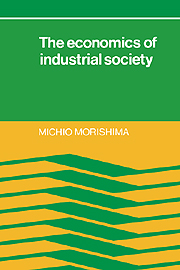3 - Fixing product prices
Published online by Cambridge University Press: 21 January 2010
Summary
More on the full-cost principle
The average cost curve
As indicated earlier, the prices of most industrial products are not fixed in the market (exchange) so as to equalize supply and demand; they are set by the enterprise itself. In order to obtain a profit the enterprise will mark up average production costs to get the product price per unit, but the mark-up ratio has to be a reasonable one. We will discuss later what constitutes a reasonable rate; we will assume for the present that the entrepreneur already has a generally accepted idea of what it should be. Thus the problem of price-fixing rests entirely on how to estimate average costs.
Costs are classified into fixed costs which do not increase even though the volume of output increases, and variable costs which increase and decrease with the volume of production. Variable costs may be further subdivided into proportional costs which vary in proportion to the volume of production and non-proportional costs which do not. The latter are of two kinds; those which vary less than proportionally, and those which vary more than proportionally.
Fixed costs are interest and depreciation costs on fixed capital, rents and remuneration to employees not engaged directly in production – directors, executives, technicians, watchmen, porters etc. However, most raw material costs and the wages of labour are proportional costs.
- Type
- Chapter
- Information
- The Economics of Industrial Society , pp. 68 - 98Publisher: Cambridge University PressPrint publication year: 1985



